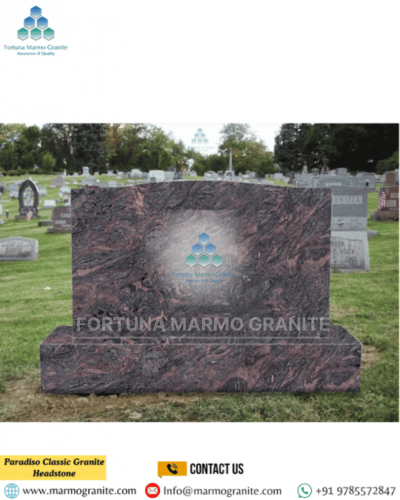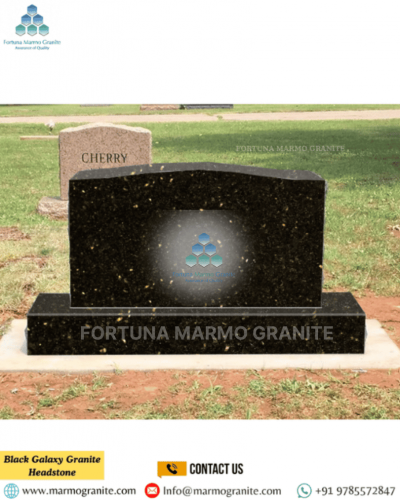How to Safely Remove Moss and Lichen from Gravestones: A Step-by-Step Guide
How to Safely Remove Moss and Lichen from Gravestones. are more than just markers; they are silent storytellers. enduring symbols of remembrance and love. Over the years, as these monuments stand exposed to the elements. they often become cloaked in a natural film of green moss. algae, and lichen—tiny organisms that thrive in damp. shaded environments commonly found in cemeteries. Indian Granite Headstones Manufacturer & Supplier .While this biological growth may seem harmless or even picturesque at first glance. Over time, gravestones can get covered with dirt. moss, and other natural growth. which may seem harmless at first but can actually cause serious damage.
Moreover, The name, dates, and messages engraved. on the stone can become hard to read, and the moisture trapped by this buildup can slowly wear away the surface. What looks like a small stain can turn into permanent marks, cracks. or even cause the stone to flake or erode if not cleaned properly. In addition, That's why cleaning a gravestone isn't just about making it look nice. it's about protecting it and keeping the memory of a loved one alive. It's a meaningful way to show care and respect. making sure their story stays visible for future generations. To do it right, you need to use soft tools, gentle cleaners, and take your time.
The Silent Threat: Why Moss and Lichen Are More Than Just an Eyesore
Before we delve into the cleaning process, it's crucial to understand why this seemingly harmless growth poses a threat. Moss and lichen aren't just clinging to the surface; they are actively working to break it down.
- Lichen: This fascinating organism is a symbiotic partnership between a fungus and algae. The fungus secretes a weak acid that dissolves the mineral components of the stone. allowing the organism to anchor its thread-like hyphae deep into the pores. This process, known as bio-corrosion, can lead to pitting, flaking, and a gradual loss of the stone's surface.
- Moss and Algae: These organisms act like sponges. They trap and hold moisture against the stone. which is a major problem, especially in climates with freezing and thawing cycles. The trapped water expands as it freezes, exerting pressure within. the stone's pores and causing small cracks to widen. This phenomenon, known as "freeze-thaw" damage. can eventually lead to spalling—the breaking off of large, thin sheets of the stone's surface.
Before You Begin: Essential Preparations and Precautions
Get Permission:
Getting permission before cleaning. a gravestone is not only a courtesy—it is a legal and ethical responsibility. Cemeteries, especially historic or privately managed ones. often enforce strict policies to protect. the integrity of memorials and maintain consistent upkeep. These rules can vary widely. Some cemeteries may allow only certified professionals. to perform cleanings, while others permit family members. but require them to follow strict guidelines regarding tools and cleaning agents.
In many cases, you may need to sign a waiver releasing. the cemetery from liability or use only pre-approved. non-abrasive cleaning solutions to prevent damage to delicate stones. Reaching out to the cemetery office or sexton's office beforehand. ensures that you understand these regulations and avoid unintentionally violating policies. Ignoring this crucial step could lead to fines. legal consequences, or even being barred from the cemetery.
Assess the Stone:
Not all stones are created equal. Identify the type of stone you are working with, as this will dictate your cleaning method.
- Granite: A very hard and durable stone that can handle slightly more rigorous cleaning methods.
- Marble and Limestone: Softer, porous stones that are highly vulnerable to acid damage and require a much gentler cleaning approach.
- Sandstone and Slate: Brittle and prone to flaking, making them the most fragile stones; they may only tolerate a light water rinse.
Gather Your Tools:
Avoid using harsh household cleaners and tools not designed for this purpose. Gather a kit that includes:
Buckets: Have at least two—one for clean water and one for your cleaning solution.
Soft-Bristled Brushes: Use nylon or natural brushes. Avoid wire brushes, scouring pads, or anything abrasive that can scratch the stone.
Wooden or Plastic Scrapers/Popsicle Sticks: Useful for carefully lifting stubborn patches of lichen.
Non-Ionic Cleaner: Essential for cleaning. Non-ionic soaps (like D/2 Biological Solution, Orvus WA Paste, or Wet & Forget) are pH-neutral, won't leave corrosive salts, and remove biological growth without harming the stone. Never use bleach, vinegar, or laundry detergent.
Plenty of Fresh Water: Bring several gallons in large containers.
The Test Spot:
Before proceeding with any full-scale cleaning of a gravestone, it is absolutely essential to begin with a test spot. This step, often overlooked, serves as a critical safeguard to prevent accidental damage to the stone's surface. Choose a discreet, inconspicuous area—such as the back, underside, or lower corner of the monument—where any potential discoloration or adverse reaction will be least noticeable. Apply a small amount of the chosen cleaner or solution and allow it to sit according to the instructions. Then gently rinse and wait for the spot to dry completely, as the true effect on the stone's color, texture, or finish will only be evident once fully dry. This precautionary measure helps ensure that the product is safe for use on the specific type of stone and finish, whether it's granite, marble, limestone, or sandstone.
The Step-by-Step Guide to Safe and Gentle Cleaning
Step 1: The Initial Rinse
In addition, Use a soft stream of water from a bucket to gently rinse the entire gravestone. This removes loose dirt, pollen, and superficial grime. Pre-wetting the stone also helps the cleaning solution work more effectively and prevents it from being absorbed too quickly.
Step 2: Apply the Cleaning Solution
Moreover, Mix a non-ionic cleaner with water following the manufacturer's instructions. A small amount is usually enough. Use a sponge or spray bottle to apply the solution evenly, starting from the top and working downward. For heavily soiled areas, you can use a slightly stronger mix.
Step 3: Gentle Scrubbing
Moreover, Use a soft-bristled brush to scrub the surface gently. Move in circular or back-and-forth motions, working from the top down in small sections. Focus on areas with moss or lichen. The goal is to remove dead and dying organisms without damaging the stone.
Step 4: The Final Rinse
In addition, Rinse the gravestone thoroughly with clean water. This step is crucial, as leftover cleaning solution can attract new growth or leave a residue. Use plenty of water to wash away all soap and loosened debris.
Post-Cleaning Care and What NOT to Do
Avoid pressure washers. High-pressure streams can pit, spall, and permanently damage the stone's surface, especially softer stones like marble or sandstone.
Avoid bleach, vinegar, or strong cleaners. Acidic or basic solutions can dissolve the stone, weaken its structure, and leave harmful salts that attract moisture and speed decay.
Avoid wire brushes or abrasive pads. These scratch the surface, destroy inscriptions, and leave tiny metal fragments that can rust and stain.
Avoid sealants or waxes. They can trap moisture, cause freeze-thaw damage, and may turn the stone yellow over time.
Conclusion
Caring for gravestones is more. than just maintenance—it is a heartfelt act of preserving history. memory, and respect. Over time, gravestones made from natural stones. like granite, marble. or sandstone can accumulate moss. and lichen due to exposure to moisture, shade, and weather. Although these growths may seem harmless. they can retain moisture, penetrate the stone's surface, and obscure important inscriptions. causing significant damage. Safely removing moss and lichen requires understanding the stone type. using non-abrasive tools. applying pH-neutral cleaning agents, and following a patient. hands-on process that protects. both the stone's integrity and the memory it represents.



